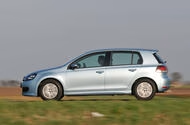How Did Dieselgate Shake Up the Automotive World?
If you’ve ever wondered why the car industry seems obsessed with emissions these days, it all traces back to a single September morning in 2015. That’s when the United States Environmental Protection Agency dropped a bombshell: Volkswagen had been using secret software to cheat emissions tests on diesel cars. What started as a recall for just under half a million vehicles quickly snowballed. Volkswagen admitted the so-called defeat device was in about 11 million cars worldwide. Billions vanished from their stock value overnight. The CEO resigned. Lawsuits and criminal charges followed.
But the fallout didn’t stop at VW’s front door. Other automakers were soon caught up in similar scandals. Suddenly, the entire European auto industry—long a symbol of engineering excellence—was under suspicion. The message was clear: trust had been broken, and the industry would never be the same.
Why Did Dieselgate Force Europe’s Car Makers to Rethink Everything?
Before Dieselgate, diesel engines were Europe’s pride and joy. They offered great fuel economy and, on paper, lower CO2 emissions than petrol engines. But the scandal exposed a darker side: nitrogen oxide (NOx) emissions that were far higher in real-world driving than in lab tests. Regulators and the public realized they’d been misled.
Governments responded with a heavy hand. New, tougher CO2 and NOx standards rolled out across Europe. The EU set a 2035 deadline to end sales of new petrol and diesel cars. The UK followed suit. These weren’t just gentle nudges—they were hard lines in the sand, and car makers had little say in the matter.
The industry had to pivot, and fast. Electric vehicles (EVs) went from niche projects to the centerpiece of every major brand’s strategy. Volkswagen alone pledged tens of billions of euros to electrification. According to the European Automobile Manufacturers’ Association, investment in EVs and batteries across Europe topped 60 billion euros between 2018 and 2020. The scale of change was unprecedented.
What Challenges Did the New Emissions Rules Create for Car Companies?
On paper, the shift to EVs seems straightforward. In reality, it’s anything but. Car makers are now expected to sell huge volumes of electric cars, even as many buyers remain hesitant due to price, range, or charging infrastructure. At the same time, companies must keep producing petrol and diesel cars for markets outside the EU, doubling their development costs.
This dual-track approach stretches resources thin. Take Renault, for example. The company has had to invest heavily in both EVs for Europe and traditional engines for other regions. Stellantis, the parent company of Peugeot and Fiat, faces similar challenges. The result? Higher costs, more complexity, and a constant race to keep up with shifting regulations.
Are European Car Makers Finally Regaining Their Confidence?
For years after Dieselgate, Europe’s car industry seemed to be on the defensive—apologizing, paying fines, and scrambling to keep up with new rules. But lately, there’s been a noticeable shift. At the recent Munich Motor Show, CEOs from BMW, Stellantis, Renault, and Volkswagen spoke out forcefully against the EU’s 2035 ban on internal combustion engines.
Their argument? The focus should be on reducing emissions over a car’s entire lifetime, not just at the tailpipe. Technologies like e-fuels, which can make conventional engines nearly carbon-neutral, deserve a seat at the table. And most importantly, car makers want the freedom to offer vehicles that people actually want—affordable, practical, and suited to real-world needs.
This isn’t just talk. European Commission President Ursula von der Leyen has signaled support for a new class of small, affordable city cars with less stringent regulations. It’s a sign that lawmakers might be willing to listen, at least a little.
Is There a Middle Ground Between Regulation and Innovation?
There’s a certain irony here. The same tough regulations that forced car makers to build better EVs are now being challenged by the very companies they transformed. Without the pressure of the 2035 targets, it’s unlikely we’d see the wave of affordable electric cars now hitting the market.
But the debate isn’t about whether to cut emissions—it’s about how, and how fast. Most experts agree the future is electric. The International Energy Agency predicts that by 2030, EVs could make up more than 60% of new car sales in Europe if current trends continue. Still, the transition needs to be workable for both industry and consumers.
One thing Dieselgate made painfully clear: unchecked industries can and do cut corners. Oversight matters. But so does giving engineers and designers the freedom to innovate. When challenged, Europe’s car makers have a track record of rising to the occasion—think of the advances in safety, efficiency, and design over the past few decades.
What’s Next for Europe’s Car Industry After a Decade of Upheaval?
A decade after Dieselgate, the scars are still visible. Trust takes time to rebuild. But there’s also a sense of renewed purpose. The industry is no longer just reacting; it’s starting to shape the conversation again. Engineers, designers, and executives are pushing for solutions that balance environmental goals with the realities of the market.
The road ahead won’t be easy. The transition to electric mobility is a massive undertaking, and the pace of change is dizzying. But if there’s one thing Europe’s car industry has shown, it’s resilience. Given the right mix of oversight and freedom, there’s every reason to believe it can help drive a cleaner, more sustainable future—without losing sight of what drivers actually want.

